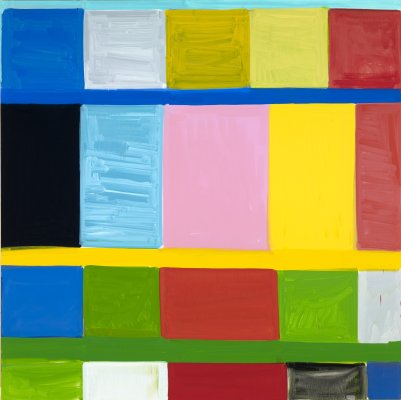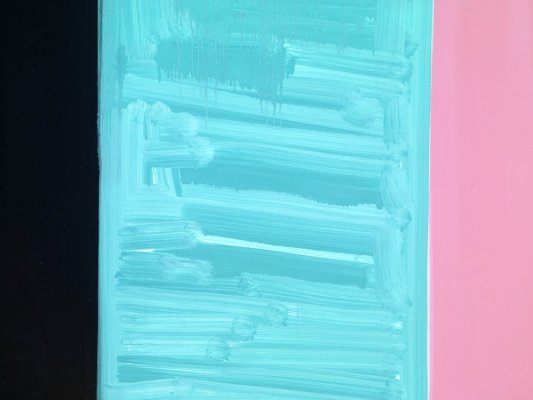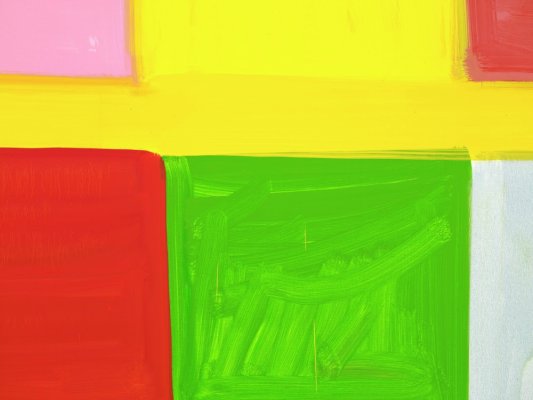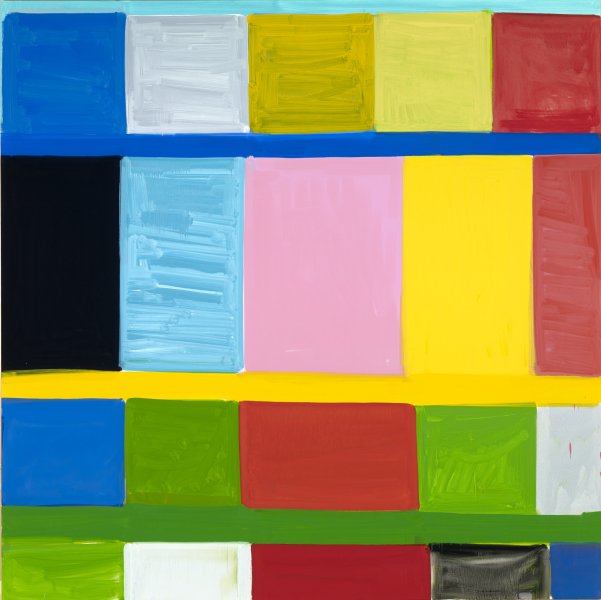Stanley Whitney thinks of color as a kind of object, complete with its own weight, volume, and solidity. From the 1970s to the present, with works like Endless Time, Whitney has structured his paintings as irregular grids, a set-up that allows him to work through a seemingly infinite number of side-by-side juxtapositions among different colors. Beginning with the top left square, Whitney selects each new hue based on a careful consideration of those already on the canvas.
In Endless Time, for example, he began the second row with an opaque and smooth application of black paint, which he followed on the right with a semitranslucent, streaky mixture of dark cyan and white. The work as a whole is a patchwork of variation in paint opacity, texture, and color, from the calming and creamy pale pink at center to the erratic and heavy-handed Kelly green that repeats in three fields.



